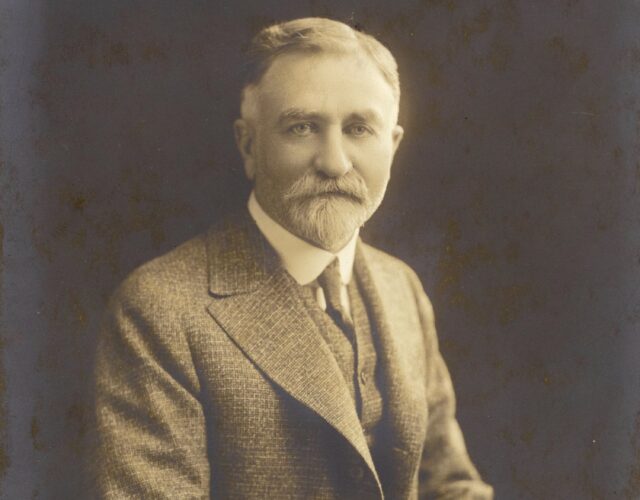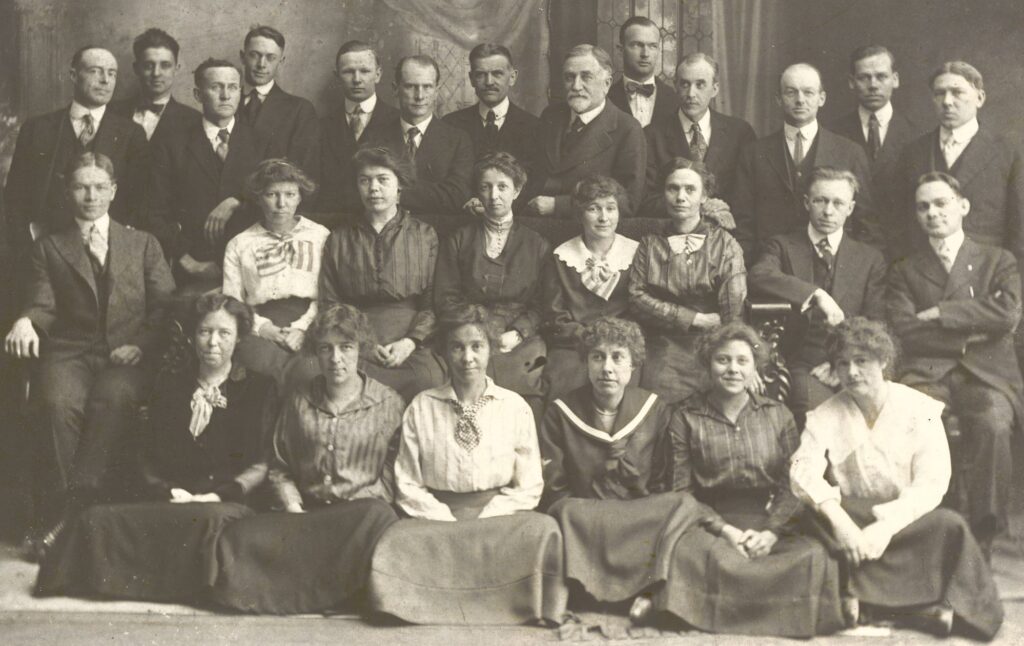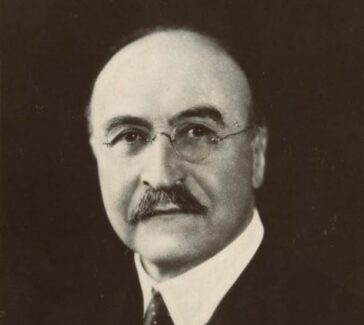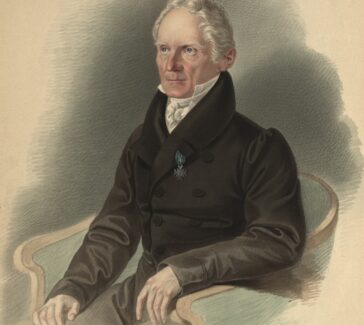Herbert Henry Dow
Founder of the Dow Chemical Company, Herbert H. Dow was an early electrochemical pioneer.

From the brine wells in Midland, Michigan, a young Herbert Dow launched his chemical business with a clever, cost-saving method for extracting bromine from brine.
Herbert Henry Dow (1866–1930), founder of the Dow Chemical Company, was an early electrochemical pioneer. The son of a master mechanic who earned his living by making improvements in small factories in Connecticut and Ohio, Dow possessed not only his father’s inventive genius but even better business acumen. In a college project at Case School of Applied Science (now Case Western Reserve University), he analyzed samples of brine from the wells around Midland, Michigan, which contained small percentages of bromine in ionic form. In those days bromine had just a few uses: in medicines (“bromides”) and photographic chemicals.
Extracting Bromine from Brine
The standard method of extracting bromine at the time was to evaporate the brine, using for fuel the leftover wood scraps from the fast-disappearing lumber industry; remove the sodium chloride, which crystallized first; then add an oxidizing agent to the remaining liquid, which contained bromine ions; and finally distill the bromine.
To eliminate the need for the now-costly fuel used in the evaporation and distillation steps, Dow’s ingenious plan, executed in 1889 in Canton, Ohio, was to oxidize the brine first with the proper amount of bleaching powder (calcium hydroxide, calcium chloride, and calcium hypochlorite), thus forming bromine, though it was still dissolved in brine. Next the brine was dripped onto burlap sacks, and in a “blowing-out” process a current of air was passed through the brine-soaked sacks to carry off the bromine gas. The bromine-laden air was then brought into contact with iron or an alkali solution, and the bromine was thereby extracted from the air as FeBr2, or alkali bromines.
Growth of a Company

After his first company went bankrupt, Dow moved to Midland in 1890 and organized the Midland Chemical Company. There he oxidized the brine by electrolysis, using electricity supplied by a secondhand 15-volt generator turned by the old steam engine in the flour mill he had rented.
After the bromine process was producing adequately, Dow next wanted to use electrolysis to make sodium hydroxide and chlorine to be turned into bleaching powder, but his first financial backers balked at this diversion of his talents. Dow turned instead to the faculty at Case for capital, forming the Dow Process Company in 1895.
After considerable struggle, and yet another business reorganization to form the Dow Chemical Company, he again succeeded with a new process—the first of many successful diversifications and several business reorganizations, first into chlorine chemicals, then into organic chemicals, such as phenol and indigo dye, and finally into magnesium metal.
During Dow’s lifetime the company obtained its bromine, chlorine, sodium, calcium, and magnesium from the brine of ancient seas under Midland, but Dow also developed experimental processes to mine modern seas.
Three years after his death in 1930, his company opened its first seawater-processing plant in North Carolina. By World War II, Dow plants on the Gulf Coast were in a position to supply magnesium for firebombs and to make lightweight parts for airplanes.



